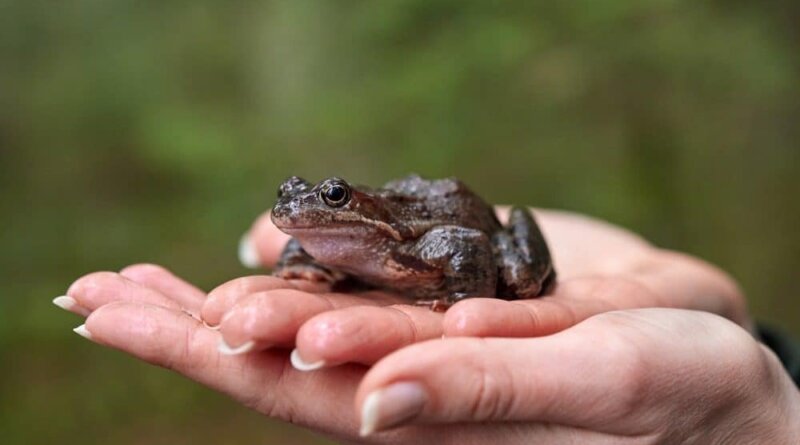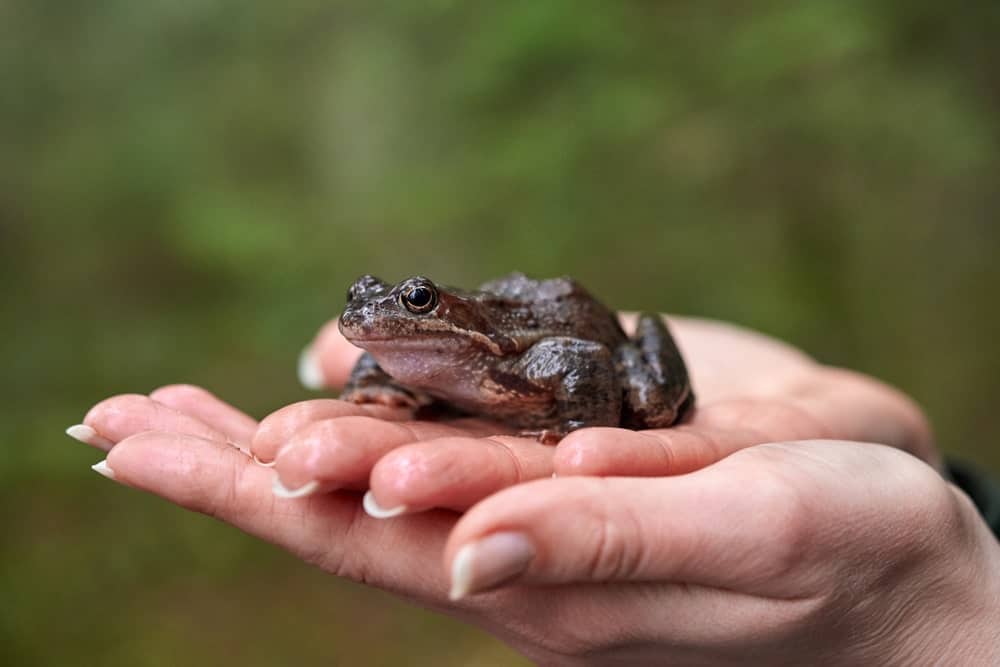Back to Basics: Teaching Your Frog to ‘Stay’
Arguably the most important cue any pet parent can teach their frog, the ‘stay’ cue is not only useful in the home setting, but can literally save your amphibian’s life.
When you first bring a frog into your heart and home, it’s easy to get overwhelmed with the abundance of opinions on frog training and obedience. There are a number of different training methods, a vast number of tools that are designed to help train your frog, and lots of people willing to give you training advice (whether you ask for it or not!).
That said, training your frog basic obedience and appropriate behavior is a responsibility of every pet owner. Arguably the most important lesson to teach your frog is to ‘stay’.
A frog who’s been taught a solid, reliable ‘stay’ is almost always safer than a frog that’s untrained. Imagine a visitor comes to your home. Without understanding ‘stay’, your frog could hop out the front door. During walks, frog owners frequently encounter flies, grasshoppers, and worms. Without a reliable ‘stay’ cue, your frog may dart after an insect, unaware of oncoming traffic or other hazards.
Even inside the home, ‘stay’ is a useful cue. When you ask your frog to sit while greeting a guest, or to lay down while your family eats dinner, a frog that hasn’t been taught to stay, may bounce right back up from where he’s sitting or leave his lily pad to beg at the dinner table.
Training your frog to stay is not taught in the same way that other cues, commands, and tricks are taught. In fact, in many ways, it’s even simpler. Here’s how to do it:
- Give the frog a cue or command, like ‘sit’ or ‘down’. As long as the frog is in that position, he is technically “staying”, it’s not necessary to give a verbal command for your frog to ‘stay’.
- When the frog is in position, like sitting or staying as commanded, give verbal praise, like “good boy/girl”, “that’s Mommy’s best tadpole,” or “I don’t care what the others say, you ARE a prince!”
- Release the frog from the original cue with another cue, like “okay” or “free” to signal to them that they’re free to get up or hop from their position.
- Reward the frog with praise, treats, or toys – whichever is most valuable to him. Only reward the frog if he waited until released from the original cue to move.
The Dogington Post is serious about dogs, but we like to have a little fun, too! This article has been fabricated by the editors of this site. Happy April Fool’s Day!





